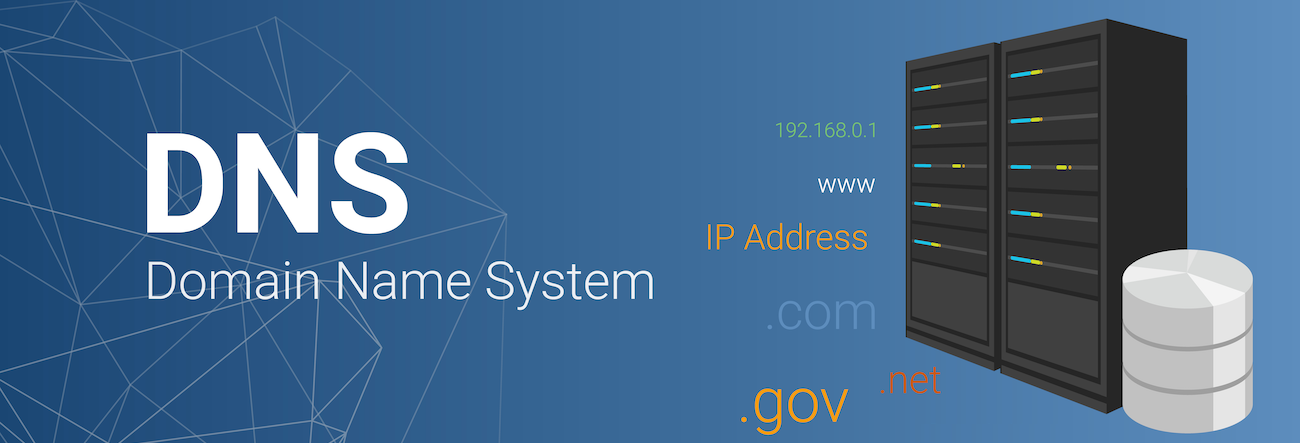The Domain Name System (DNS) is a crucial component of the Internet’s infrastructure, often described as the phonebook of the Internet. It translates human-readable domain names like domain.com into IP addresses like 104.21.81.126.
Understanding how to manage DNS is essential for anyone looking to run a website, manage a network, or ensure smooth online operations. This article will guide you through the basics of DNS management.
What Is DNS?
DNS is a hierarchical and decentralized naming system for computers, services, or any resource connected to the Internet or a private network. It associates various information with domain names assigned to each participating entity.
At its core, DNS works by translating domain names into IP addresses, allowing users to access websites with easy-to-remember names instead of complex numerical addresses. For instance, when you type google.com into your browser, DNS servers resolve that name into the IP address of the Google servers.
DNS Records
To effectively manage DNS, it is essential that you familiarize yourself with DNS record types.
- A Record: Maps a domain name to an IPv4 address.
- CNAME Record: Maps one domain name to another, useful for creating aliases.
- MX Record: Specifies the mail servers responsible for receiving email on behalf of the domain.
- TXT Record: Allows administrators to insert any text into DNS records, often used for email validation and other verification purposes.
- SRV Record: Defines the location of servers for specified services.
DNS Resolution Process
When you enter a domain name into a browser, the browser sends a DNS query to a recursive DNS server, usually provided by your ISP. The recursive server queries a root name server, which directs it to the appropriate Top-Level Domain (TLD) server for the domain’s extension (like .com).
Then, the recursive server queries the TLD server, which points it to the authoritative DNS server for the specific domain. In turn, the authoritative DNS server provides the IP address associated with the domain name, and the recursive server returns this IP address to the browser.
Finally, the browser can now connect to the target website using this IP address.
DNS Servers
Recursive DNS Servers receive queries from client machines and recursively query authoritative DNS servers to resolve domain names.
Root Name Servers act as the first step in translating human-readable domain names into IP addresses, directing queries to appropriate TLD servers.
TLD Servers are responsible for top-level domains (like .com) and direct queries to the authoritative DNS servers for specific domains.
Authoritative DNS Servers store DNS records and answer queries from recursive DNS servers.
Setting Up DNS
Setting up DNS involves three steps, starting with registering a domain name and accessing DNS settings.
- Register a Domain Name: Choose and register a domain name through a domain registrar. Ensure that the registrar provides DNS management tools.
- Access DNS Settings: After registering the domain, log in to the registrar’s DNS management interface to access the DNS settings.
- Add DNS Records: Finally, add or edit the records that you need.
The most common DNS change that people need to make after buying a domain is editing the A record. By doing this, they direct the domain to a server where their website is hosted.
Managing DNS
Effective DNS management involves regular updates and maintenance of DNS records to ensure that they accurately reflect your network infrastructure and services. Here are some key practices.
Use DNS Management Tools
Leverage web-based interfaces provided by registrars, hosts, or third-party DNS management platforms such as Cloudflare. These tools can make the whole process much easier.
Add, Modify, and Delete Records
When you add a new service, it is crucial to ensure that all necessary DNS records are created and properly configured. Additionally, it is important to regularly review and update DNS records to reflect any changes in your network or services.
By keeping records current and removing outdated records, you will maintain a clean and efficient DNS zone file, which can prevent issues and even enhance performance.
Best Practices
Adopting clear and consistent naming conventions for all DNS records is a best practice that facilitates easy identification and management. Alongside this, maintaining thorough documentation of all DNS changes and configurations ensures that you have a comprehensive record for troubleshooting and future reference.
DNS Management Platforms
Comprehensive DNS management platforms like Cloudflare offer advanced features that can significantly improve DNS management. These platforms provide DNS load balancing, monitoring, and enhanced security options, making them valuable tools for maintaining a robust and efficient DNS infrastructure.
Common DNS Issues and Troubleshooting
Despite best practices, DNS issues can still arise. Understanding common problems and how to troubleshoot them is vital for smooth DNS management.
Common Problems
- DNS Propagation Delay: Changes to DNS records can take time to propagate across all DNS servers globally, sometimes up to 48 hours.
- Incorrect DNS Records: Typos or misconfigurations in DNS records can lead to website downtime or email delivery issues.
- Expired Domain or DNS Records: Domains or DNS records can expire if not renewed, leading to service disruptions.
Troubleshooting Tools
- nslookup: A command-line tool used to query DNS servers and display DNS records.
- dig: Another command-line tool that provides detailed information about DNS queries and responses.
- Online DNS Checkers: Websites like MXToolbox and SecurityTrails offer web-based tools for checking and diagnosing DNS issues.
Steps to Diagnose and Resolve Issues
- Check DNS Records: Verify that DNS records are correct and up to date.
- Flush DNS Cache: Clear the local DNS cache on your computer or DNS server to ensure that you are getting the latest DNS information.
- Consult Logs and Reports: Use DNS management tools and platforms to access logs and reports that can help identify the root cause of DNS issues.
Conclusion
Effective DNS management is critical for ensuring the smooth operation of websites and online services. By understanding the basics of DNS and setting up and managing DNS records properly, you can maintain a reliable and efficient DNS infrastructure.
Start applying the outlined practices today to manage your DNS more effectively.
Make It Easy
Tired of wasting time on hosting chores and want to focus your energy on what matters most to you? Take a look at our VPS Hosting Plans and let our heroic support team save you countless hours by guiding you every step of the way.



